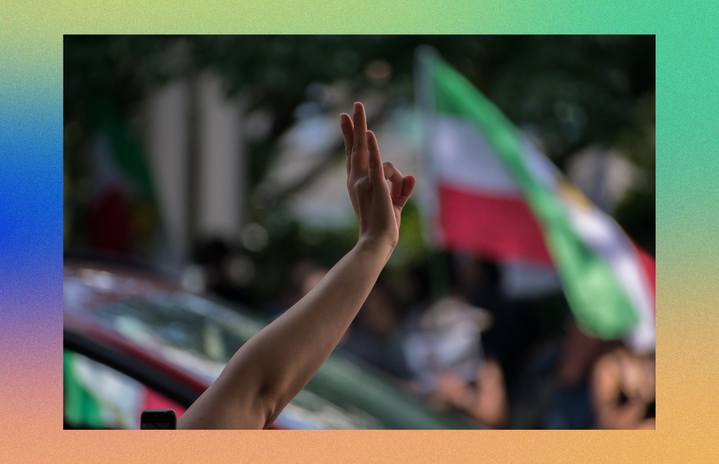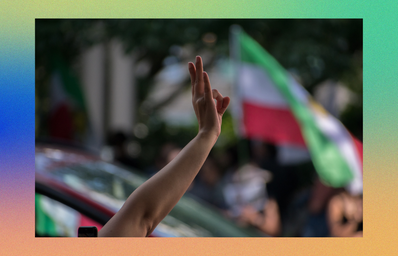TW: sexual assault, rape, domestic violence.
Mahsa (Jina) Amini’s death in September was a catalyst for the explosion of protests in Iran. Amini, a 22-year-old Kurdish woman, was visiting family in Tehran when she was arrested by the Morality Police for not wearing her hijab correctly according to Iranian policy. She’s since become the face of recent protests, with people printing her face and name on signs and t-shirts.
History of Women’s Rights in Iran:
For decades, there’s been a huge lack of legal protection for women in Iran, from vaguely defined laws surrounding the hijab to marital law.
In 2021, after the economic crisis, the Iranian government passed a Population Law in an attempt to increase the country’s population. Women no longer had access to contraception and abortion was only available for women whose lives would be put at significant risk by pregnancy. Financial incentives, such as interest free loans, were introduced for families whose daughters were married before the age of 25. The civil code already allowed for girls aged thirteen and boys aged fifteen to get married, but these incentives appealed to families who were struggling after the economic crisis – it meant that marriage became a financial solution.
Following the introduction of Population Law, an increasing number of women and girls were forced into marriage as a financial solution for their families, and, as a result of existing marital law, some were forced to give up their education or work. Despite the fact that over half of university graduates in Iran are women, many are forced to give up their education and/or career once married. It’s the husband’s decision where they live, where his wife works, and whether his wife can have a passport to travel outside the country (Passport Law). Due to these restricted social freedoms, some women have become completely dependent on their husbands.
The lack of legal protection for women under Iranian marital law is apparent through the lack of protection for survivors of sexual assault, rape and domestic violence, as well as for divorced women. There’s no explicit legal criminalisation of marital rape, meaning there’s no protection for women who are abused within marriage, and mothers are often forced to stay married otherwise they lose custody once their child reaches the age of seven. Unmarried women often face criminal charges for reporting sexual assault or rape if the judge doesn’t believe her. The threat of criminal charges has arguably created a culture of fear and silence, resulting in fewer survivors reporting cases of sexual assault or rape.
History of the Hijab in Iran: *
From the unveiling policies of the late 1930s to the mandatory dress code of 1979 to the present, the hijab has been used by opposing ideologies to control women and women’s bodies. Politics has swung from one extreme to another with Reza Shah (Reza Pahlavi) trying to enforce his unveiling policy during the late 1930s to Ayatollah Khomeini enforcing the mandatory dress code in 1979.
Pahlavi, Iran’s last Shah, was inspired by the West to modernise the dress code and eliminate the use of the hijab. Whilst many women were still forced to wear the hijab by their husbands or families, with these unveiling policies there was an increase in women attending schools and universities, and to a certain extent, women were able to freely exercise their social freedoms. However, although these were positive improvements, police could forcefully removed hijabs and women were often arrested and punished for wearing them, even if they were forced to by their husbands or families. We therefore have to be careful not to idealise the Shah’s regime, it was flawed in a similar way to the current regime.
After the revolution in 1979, politics swung to the extreme opposite with Khomeini passing laws that enforced a dress code for all women above the age of 9 and the introduction of the Morality Police in 2005 to apply this law. Women were barred from certain environments (married women weren’t allowed to attend regular schools, women were no longer allowed in certain careers); men and women were segregated in public spaces; and women were increasingly censored in different forms of media, with the Iranian government recently erasing women completely from advertisements. The morality police, established in 2005, were responsible for arresting people in violation of the dress code. However, the laws surrounding this are vague and can be interpreted in many ways with numerous methods of enforcement. This ambiguity and possibility of numerous interpretations surrounding enforcement is potentially what’s led to so many women being killed by authorities in today’s protests.
*For more information, there’s a great article by Sahar Maranlou which tracks the history of the hijab (https://theconversation.com/hijab-law-in-iran-over-the-decades-the-continuing-battle-for-reform-192037)
History of Protesting in Iran:
Protesters have often faced severe punishment and criminal charges. Whilst some social reform has been achieved by various campaigns, protestors and activists have been silenced by the Iranian government either being imprisoned (for example, the One Million Signatures campaign) or sentenced to the death penalty.
The One Million Signatures campaign was established in 2006 and aimed to obtain one million signatures in order to voice the collective demand for gender equality in Iran. However, between 2006 and 2009, Iranian authorities gradually arrested the leaders of the movement. The My Stealthy Freedom campaign was established in 2017 and used the White Wednesday movement (a movement encouraging people to wear white) to illustrate collective opposition to the mandatory dress code. In response, authorities arrested more than 35 women who were treated brutally when in custody. The government’s responses highlight an existing pattern of force and violence, which has arguably contributed to a culture of fear and silence.
2022 Protests and Links to Sports:
In September 2022, Amini was arrested for not wearing her hijab according to the dress code and protests broke out throughout Iran after her funeral. Women are at the forefront of these protests, breaking the long tradition of silence imposed on them since the Iranian revolution. They have taken to the streets, burning their headscarves, cutting their hair, calling for the mandatory dress code to be abolished. Many have been killed by authorities since the start of these protests, including Nika Shakarami, Hadis Najafi and Sarina Esmailzadeh.
The Iranian government has been monitoring and censoring all media coverage of these protests, from arresting journalists to restricting national access to social media. The people of Iran, however, have started to evade governmental control over social media by simply using a VPN, and, although it has been slightly overshadowed by the controversy surrounding the World Cup, there’s been an overwhelming number of social media accounts dedicated to raising awareness, organising protests and sharing pictures and videos of the protests held in Iran.
While coverage of the World Cup has slightly overshadowed the protests, many are using the World Cup as a platform to amplify the voices of protestors. Last week, before the match against England, the Iranian football team refused to sing the national anthem which illustrates a collective dissatisfaction with the current government. Additionally, only a few days ago it was reported that Voria Ghafouri (an Iranian footballer) was arrested after speaking out on social media against the government’s response to the protests. Not only are the players using the World Cup as a platform but the fans are as well. Many Iranian fans have attended matches wearing t-shirts with the names of women who have been killed during the protests printed on them. FIFA’s response, which was to ban people wearing these or similar t-shirts from attending the games, has just highlighted further the level of censorship that protesters are met with, and this has actually drawn more attention to the issue.
What can I do?
Read and learn about what’s going on in Iran at the moment and the history of these protests. There are some great articles and social media content discussing these issues. It can be a bit overwhelming and can seem a bit like a thread that just keeps unravelling at first, but it’s really interesting and extremely important to learn about.
Go to protests, donate to different causes if you can. Tell your friends and family, raise awareness in your own social circles
Written by: Gabrielle Estorninho
Edited by: Ella Dayer


